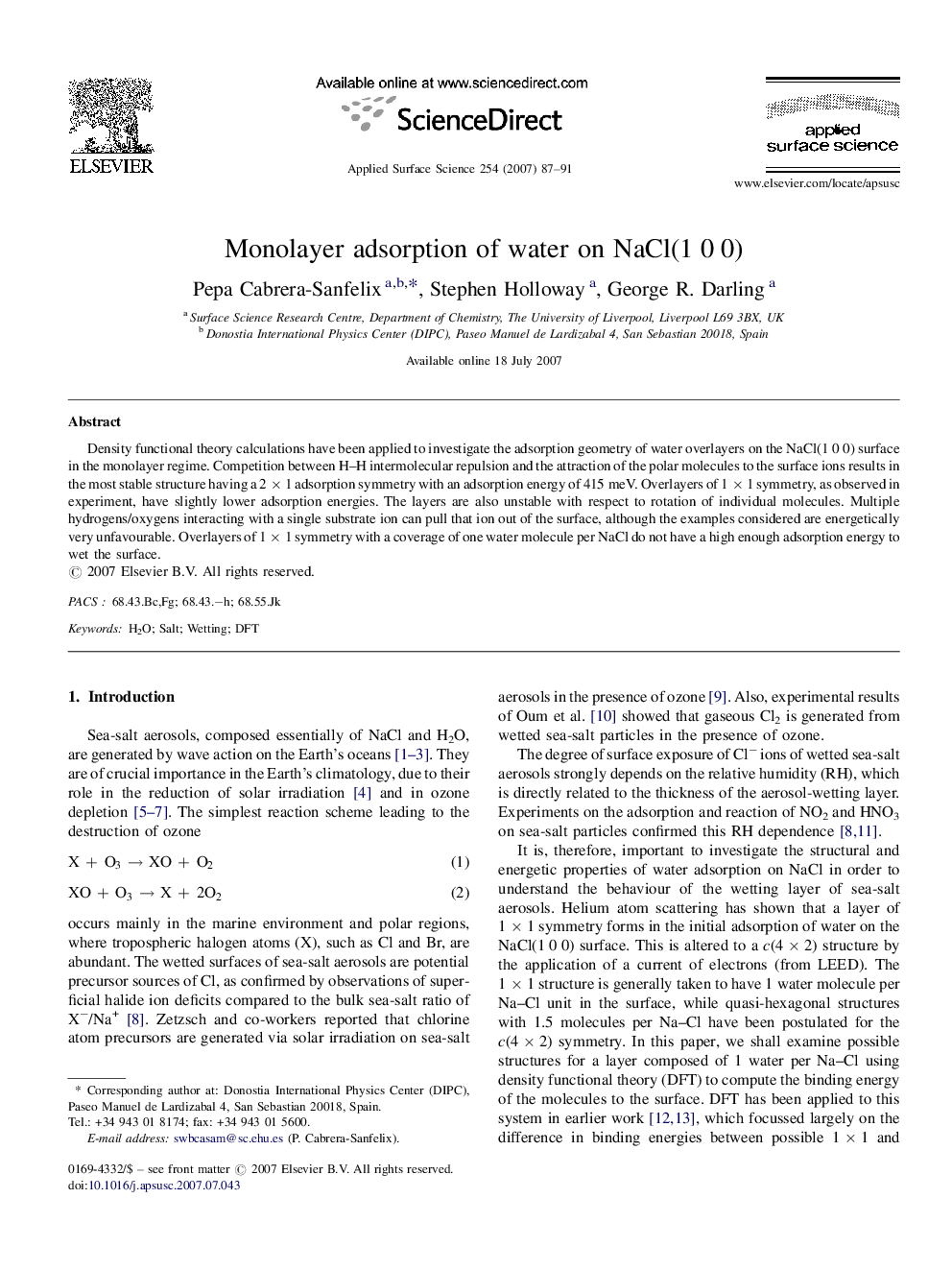| Article ID | Journal | Published Year | Pages | File Type |
|---|---|---|---|---|
| 5368304 | Applied Surface Science | 2007 | 5 Pages |
Density functional theory calculations have been applied to investigate the adsorption geometry of water overlayers on the NaCl(1Â 0Â 0) surface in the monolayer regime. Competition between H-H intermolecular repulsion and the attraction of the polar molecules to the surface ions results in the most stable structure having a 2Â ÃÂ 1 adsorption symmetry with an adsorption energy of 415Â meV. Overlayers of 1Â ÃÂ 1 symmetry, as observed in experiment, have slightly lower adsorption energies. The layers are also unstable with respect to rotation of individual molecules. Multiple hydrogens/oxygens interacting with a single substrate ion can pull that ion out of the surface, although the examples considered are energetically very unfavourable. Overlayers of 1Â ÃÂ 1 symmetry with a coverage of one water molecule per NaCl do not have a high enough adsorption energy to wet the surface.
